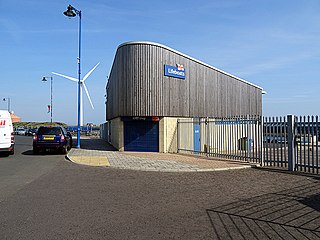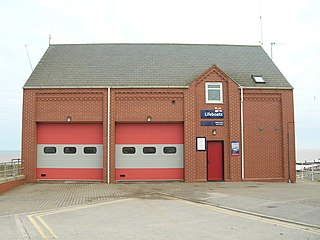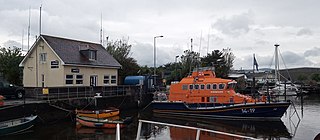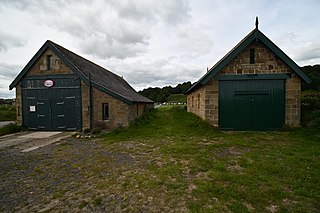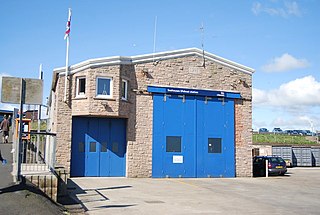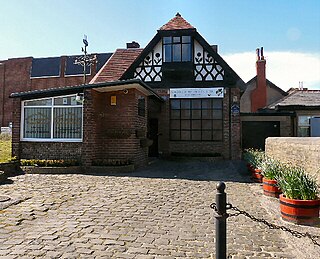History
A local coble was modified to act as a lifeboat for Bamburgh Castle by Lionel Lukin in 1786. This was done at the request of a Dr Sharp and supported by the "Crewe Trustees", a charitable organisation founded by Nathaniel Crewe, Bishop of Durham in 1704. [2] [3] [4] [5] [6] Because of this, it was long thought that Bamburgh Castle was the first lifeboat station in the country but more recent research puts that distinction with Formby Lifeboat Station, founded 10 years earlier. [7]
It was only in 1882, following several shipwrecks in the area, that requests were made to the RNLI to place a boat at Bamburgh, which was agreed. A site for a boathouse was chosen on The Wyndings, and constructed at a cost of £231. A 32-foot self-righting "pulling and sailing"" lifeboat (one with oars and sails), built by Woolfe of Shadwell and costing £282, was funded by the late Mr John Cuttell, of Holmfirth, Yorkshire, and named after the donor and his sister John and Betty Cuttell (ON 184) at a ceremony on 24 August 1882. A further £1000 was donated by Miss Cuttell for the upkeep of the Bamburgh Castle lifeboat in perpetuity. Two further lifeboats to serve at Banburgh were also named John and Betty Cuttell. [8] [9]
In 1885, the John and Betty Cuttell (ON 184) was transferred to Upgang lifeboat station near Whitby, renamed Joseph Sykes, and Bamburgh received another 32-foot self-righting lifeboat built by Woolfe, a slightly older boat built in 1879, previously named City of Manchester at Ferryside Lifeboat Station.
She was called out twice over the next 4 years, both calls in March 1888, firstly to the Marshall of Thurso [10] on 4 March 1888, the crew being rescued by the Boulmer lifeboat.
The second call-out, on 15 March 1888, resulted in an inquiry being held after the crew failed to launch to the Albion of Brevig, [11] which was wrecked with the loss of 7 of 10 crew, 3 reaching shore themselves. [12] This inquiry, held by the RNLI's district inspector at the Victoria Hotel in Bamburgh, pointed to the reasons for the lifeboat stations closure several years later. The crew were acquitted of wasting inordinate time before launching, and then for failing to man the lifeboat. In defence it was said that the location was extremely difficult to launch from, with both men and the wheeled lifeboat carriage getting stuck in the flat sand. Also it was noted that the location had caused a difficulty in recruiting crew, with the local men tending to relocate frequently for work, the crew was instead situated in North Sunderland and conveyed to Bamburgh upon the alarm being raised. [12] [13]
A third and final lifeboat would be provided to Bamburgh in 1889. This time, it was a 34-foot self-righting lifeboat, again constructed by Woolfe, costing £426, and again named John and Betty Cuttell (ON 247). The boat was only launched once, along with the North Sunderland lifeboat Thomas Berwick, on 4 April 1891, to the Ornen, aground at Greehill Rocks. Both lifeboats were beaten by the conditions, and failed to reach the vessel. The following day, with calmer conditions, a rescue was carried out by the North Sunderland lifeboat. [14] The John and Betty Cuttell was called, but stood down, a further three times. [15] [9]
With a record of just three launches and no lives saved over a 15 year period, primarily due to difficult launching conditions, the Bamburgh Castle lifeboat station was closed in 1897. The boathouse still remains, and is used as a Holiday Let. [1] [16]
In 2021, car mechanic Chris Mason set off on his own personal challenge to visit every lifeboat station in the UK and Ireland, raising money for the RNLI on the way. He started his trip at the former station at Bamburgh Castle. [17]



